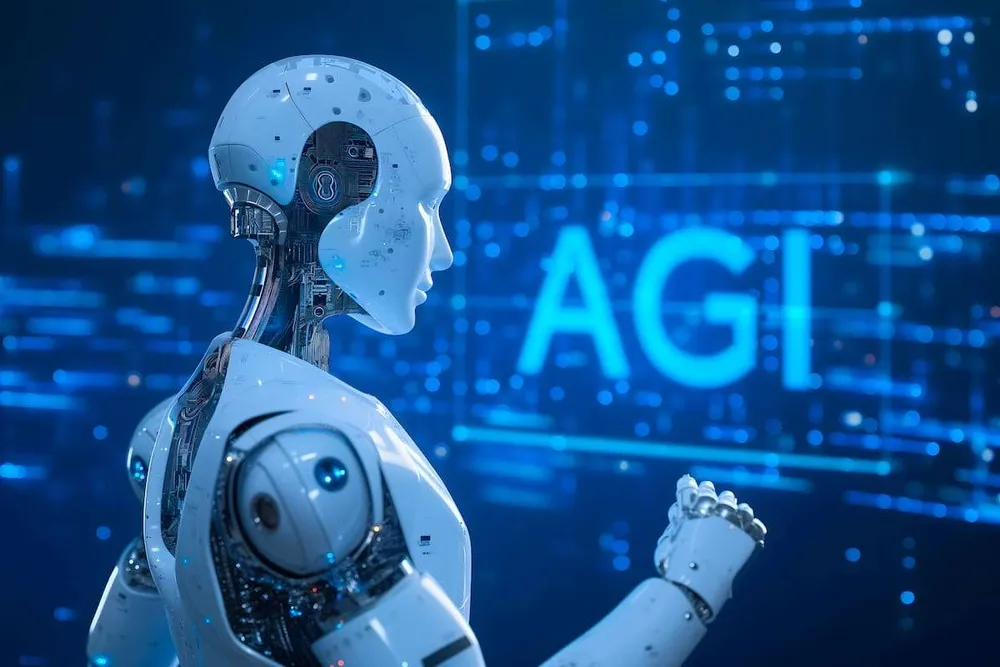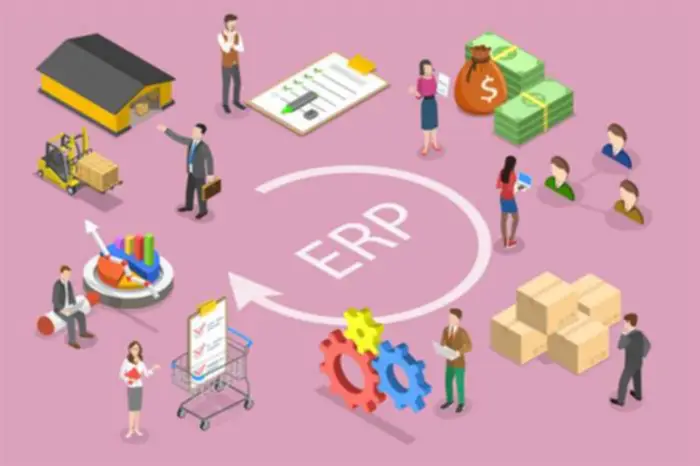Machine Learning Basics: Definition, Types, and Applications
He applies the term to the algorithms that enable computers to recognize specific objects when analyzing text and images. Researcher Terry Sejnowksi creates an artificial neural network of 300 neurons and 18,000 synapses. Called NetTalk, the program babbles like a baby when receiving a list of English words, but can more clearly pronounce thousands of words with long-term training. Machine learning has also been an asset in predicting customer trends and behaviors. These machines look holistically at individual purchases to determine what types of items are selling and what items will be selling in the future. For example, maybe a new food has been deemed a “super food.” A grocery store’s systems might identify increased purchases of that product and could send customers coupons or targeted advertisements for all variations of that item.
But in reality, you will have to consider hundreds of parameters and a broad set of learning data to solve a machine learning problem. Good quality data is fed to the machines, and different algorithms are used to build ML models to train the machines on this data. The choice of algorithm depends on the type of data at hand and the type of activity that needs to be automated. Applications of inductive logic programming today can be found in natural language processing and bioinformatics.
This improvement happens because the model develops better techniques for distinguishing a human from a tree or a cow and distinguishing red hair from blonde hair. This is what is meant by “learning.” Humans learn basic concepts or skills and then improve through repetition and extrapolation. Traditional computer programs are designed to execute a given function, but those functions are relatively limited and can only change when a programmer changes them.
Given that machine learning is a constantly developing field that is influenced by numerous factors, it is challenging to forecast its precise future. Machine learning, however, is most likely to continue to be a major force in many fields of science, technology, and society as well as a major contributor to technological advancement. The creation of intelligent assistants, personalized healthcare, and self-driving automobiles are some potential future uses for machine learning. Important global issues like poverty and climate change may be addressed via machine learning. For the sake of simplicity, we have considered only two parameters to approach a machine learning problem here that is the colour and alcohol percentage.
Genetic algorithms actually draw inspiration from the biological process of natural selection. These algorithms use mathematical equivalents of mutation, selection, and crossover to build many variations of possible solutions. An artificial neural network is a computational model based on biological neural networks, like the human brain. It uses a series of functions to process an input signal or file and translate it over several stages into the expected output. This method is often used in image recognition, language translation, and other common applications today. Another type is instance-based machine learning, which correlates newly encountered data with training data and creates hypotheses based on the correlation.
Visualization involves creating plots and graphs on the data and Projection is involved with the dimensionality reduction of the data. A Bayesian network is a graphical model of variables and their dependencies on one another. Machine learning algorithms might use a bayesian network to build and describe its belief system. One example where bayesian networks are used is in programs designed to compute the probability of given diseases. Using computers to identify patterns and identify objects within images, videos, and other media files is far less practical without machine learning techniques. Writing programs to identify objects within an image would not be very practical if specific code needed to be written for every object you wanted to identify.
For example, if machine learning is used to find a criminal through facial recognition technology, the faces of other people may be scanned and their data logged in a data center without their knowledge. In most cases, because the person is not guilty of wrongdoing, nothing comes of this type of scanning. However, if a government or police force abuses this technology, they can use it to find and arrest people simply by locating them through publicly positioned cameras. In an underfitting situation, the machine-learning model is not able to find the underlying trend of the input data. All types of machine learning depend on a common set of terminology, including machine learning in cybersecurity.
This training dataset is a smaller part of the bigger dataset and serves to give the algorithm a basic idea of the problem, solution, and data points to be dealt with. The training dataset is also very similar to the final dataset in its characteristics and provides the algorithm with the labeled parameters required for the problem. One of the significant obstacles in machine learning is the issue of maintaining data privacy and security. As the significance of data privacy and security continues to increase, handling and securing the data used to train machine learning models is crucial. Companies should implement best practices such as encryption, access controls, and secure data storage to ensure data privacy.
This approach is commonly used in various applications such as game AI, robotics, and self-driving cars. Reinforcement learning is a learning algorithm that allows an agent to interact with its environment to learn through trial and error. The agent receives feedback through rewards or punishments and adjusts its behavior accordingly to maximize rewards and minimize penalties. Reinforcement learning is a key topic covered in professional certificate programs and online learning tutorials for aspiring machine learning engineers. You can foun additiona information about ai customer service and artificial intelligence and NLP. The model uses the labeled data to learn how to make predictions and then uses the unlabeled data to cost-effectively identify patterns and relationships in the data.
Machine learning vs. deep learning neural networks
If it suggests tracks you like, the weight of each parameter remains the same, because they led to the correct prediction of the outcome. If it offers the music you don’t like, the parameters are changed to make the following prediction more accurate. In case of the program finding the correct solution, the interpreter reinforces the solution by providing a reward to the algorithm. If the outcome is not favorable, the algorithm is forced to reiterate until it finds a better result. In most cases, the reward system is directly tied to the effectiveness of the result.
However, because the data is gargantuan in nature, it is impossible to process and analyze it using traditional methods. Composed of a deep network of millions of data points, DeepFace leverages 3D face modeling to recognize faces in images in a way very similar to that of humans. The financial services industry is championing machine learning for its unique ability to speed up processes with a high rate of accuracy and success. What has taken humans hours, days or even weeks to accomplish can now be executed in minutes. There were over 581 billion transactions processed in 2021 on card brands like American Express.
When a new input is analyzed, its output will fall on one side of this hyperplane. The side of the hyperplane where the output lies determines which class the input is. This website is using a security service to protect itself from online attacks. There are several actions that could trigger this block including submitting a certain word or phrase, a SQL command or malformed data.
- These algorithms allow computers to perform important tasks by generalizing from examples.
- Standard algorithms used in machine learning include linear regression, logistic regression, decision trees, random forests, and neural networks.
- The model can use the description to decide if a new drink is a wine or beer.You can represent the values of the parameters, ‘colour’ and ‘alcohol percentages’ as ‘x’ and ‘y’ respectively.
- A model that uses supervised machine learning is continuously taught with properly labeled training data until it reaches appropriate levels of accuracy.
The purpose of this article is to provide a business-minded reader with expert perspective on how machine learning is defined, and how it works. Machine learning and artificial intelligence share the same definition in the minds of many however, there are some distinct differences readers should recognize as well. References and related researcher interviews are included at the end of this article for further digging. Training machines to process and analyze threat data from numerous sources brings two clear benefits for information security in organizations. Firstly, as previously mentioned, there are significant advantages in the scale of data which can be collected and analyzed by AI systems, further enhancing the cyber threat intelligence cycle.
This offers more post-deployment development than supervised learning algorithms. Machine learning models can make decisions that are hard to understand, which makes it difficult to know how they arrived at their conclusions. Data accessibility training datasets are often expensive to obtain or difficult to access, which can limit the number of people working on machine learning projects. Explicitly programmed systems are created by human programmers, while machine learning systems are designed to learn and improve on their own through algorithms and data analysis.
Training Methods for Machine Learning Differ
However, real-world data such as images, video, and sensory data has not yielded attempts to algorithmically define specific features. An alternative is to discover such features or representations through examination, without relying on explicit algorithms. Data scientists must understand data preparation as a precursor to feeding data sets to machine learning models for analysis. Google also uses machine learning to improve search engine performance, power Google Translate with help from advanced NLP and cutting-edge artificial neural networks. You can use this type of machine learning if you don’t have enough labeled data for a supervised learning algorithm or if it’s too time-consuming or expensive to label the right amount of data. In short, machine learning is a subfield of artificial intelligence (AI) in conjunction with data science.
However, not only is this possibility a long way off, but it may also be slowed by the ways in which people limit the use of machine learning technologies. The ability to create situation-sensitive decisions that factor in human emotions, imagination, and social skills is still not on the horizon. Further, as machine learning takes center stage in some day-to-day activities such as driving, people are constantly looking for ways to limit the amount of “freedom” given to machines. When an algorithm examines a set of data and finds patterns, the system is being “trained” and the resulting output is the machine-learning model.
Precisely can improve machine learning outcomes by accessing and integrating application data and machine data from legacy systems into next-gen analytic platforms. Similarly, bias and discrimination arising from the application of machine learning can inadvertently limit the success of a company’s products. If the algorithm studies the usage habits of people in a certain city and reveals that they are more likely to take advantage of a product’s features, the company may choose to target that particular market. However, a group of people in a completely different area may use the product as much, if not more, than those in that city. They just have not experienced anything like it and are therefore unlikely to be identified by the algorithm as individuals attracted to its features.
Algorithmic bias is a potential result of data not being fully prepared for training. Machine learning ethics is becoming a field of study and notably be integrated within machine learning engineering teams. Support-vector machines (SVMs), also known as support-vector networks, are a set of related supervised learning methods used for classification and regression. In addition to performing linear classification, SVMs can efficiently perform a non-linear classification using what is called the kernel trick, implicitly mapping their inputs into high-dimensional feature spaces.
In computer science, the field of artificial intelligence as such was launched in 1950 by Alan Turing. As computer hardware advanced in the next few decades, the field of AI grew, with substantial investment from both governments and industry. However, there were significant obstacles along the way and the field went through several contractions and quiet periods. It is already widely used by businesses across all sectors to advance innovation and increase process efficiency.
What is Federated Learning? Definition, How it Works, Benefits – Techopedia
What is Federated Learning? Definition, How it Works, Benefits.
Posted: Wed, 17 Jan 2024 08:00:00 GMT [source]
An understanding of how data works is imperative in today’s economic and political landscapes. And big data has become a goldmine for consumers, businesses, and even nation-states who want to monetize it, use it for power, or other gains. AV-TEST featured Trend Micro Antivirus Plus solution on their MacOS Sierra test, which aims to see how security products will distinguish and protect the Mac system against malware threats. Trend Micro’s product has a detection rate of 99.5 percent for 184 Mac-exclusive threats, and more than 99 percent for 5,300 Windows test malware threats.
Since 2015, Trend Micro has topped the AV Comparatives’ Mobile Security Reviews. Automate the detection of a new threat and the propagation of protections across multiple layers including endpoint, network, servers, and gateway solutions. Discover more about how machine learning works and see examples of how machine learning is all around us, every day.
The three major building blocks of a system are the model, the parameters, and the learner. Deep Learning with Python — Written by Keras creator and Google AI researcher François Chollet, this book builds your understanding through intuitive explanations and practical examples. Examples of ML include the spam filter that flags messages in your email, the recommendation engine Netflix uses to suggest content you might like, and the self-driving cars being developed by Google and other companies. A multi-layered defense to keeping systems safe — a holistic approach — is still what’s recommended. How Machine Learning Can Help BusinessesMachine Learning helps protect businesses from cyberthreats.
Deepfake technology can also be used in business email compromise (BEC), similar to how it was used against a UK-based energy firm. Cybercriminals sent a deepfake audio of the firm’s CEO to authorize fake payments, causing the firm to transfer 200,000 British pounds (approximately US$274,000 as of writing) to a Hungarian bank account. If you’re interested in a future in machine learning, the best place to start is with an online degree from WGU. An online degree allows you to continue working or fulfilling your responsibilities while you attend school, and for those hoping to go into IT this is extremely valuable.
Commonly known as linear regression, this method provides training data to help systems with predicting and forecasting. Classification is used to train systems on identifying an object and placing it in a sub-category. For instance, email filters use machine learning to automate incoming email flows for primary, promotion and spam inboxes. Recommendation engines, for example, are used by e-commerce, social media and news organizations to suggest content based on a customer’s past behavior. Machine learning algorithms and machine vision are a critical component of self-driving cars, helping them navigate the roads safely.
They’re often adapted to multiple types, depending on the problem to be solved and the data set. For instance, deep learning algorithms such as convolutional neural networks and recurrent neural networks are used in supervised, unsupervised and reinforcement learning tasks, based on the specific problem and availability of data. While machine learning is a powerful tool for solving problems, improving business operations and automating tasks, it’s also a complex and challenging technology, requiring deep expertise and significant resources.
There are also some types of machine learning algorithms that are used in very specific use-cases, but three main methods are used today. We cannot talk about machine learning without speaking about big data, one of the most important aspects of machine learning algorithms. Any type of AI is usually dependent on the quality of its dataset for good results, as the field makes use of statistical methods heavily.
Machine learning algorithms parse vast amounts of data, learning from it to make determinations or even predictions about the world. Machine learning is a field of artificial intelligence that allows systems to learn and improve from experience without being explicitly programmed. It has become an increasingly popular topic in recent years due to the many practical applications it has in a variety of industries. In this blog, we will explore the basics of machine learning, delve into more advanced topics, and discuss how it is being used to solve real-world problems.
The swiftness and scale at which ML can solve issues are unmatched by the human mind, and this has made this field extremely beneficial. Gadgets can comprehend to recognize designs and connotations in data inputs, allowing them to automate mundane operations with the help of huge quantities of computing power dedicated to a single task or numerous distinct roles. With so many possibilities machine learning already offers, businesses of all sizes can benefit from it. This problem can be solved, but doing so will take a lot of effort and time as scientists must classify valid and unuseful data. The ML algorithm updates itself every time it makes a mistake and, thus, without human intervention, it becomes more analytically accurate.
Why an Open-Source Future Can Make AI Work for Creatives
These algorithms are trained using organized input data sets made up of labeled examples. Using these data sets—often called training datasets—computer programs are taught to recognize input, output, and the steps required to turn the former into the latter. Classical machine learning depends more on human intervention to learn while deep learning can use labeled datasets, also called supervised learning, to inform its algorithm, requiring less human interference. In unsupervised learning problems, all input is unlabelled and the algorithm must create structure out of the inputs on its own. Clustering problems (or cluster analysis problems) are unsupervised learning tasks that seek to discover groupings within the input datasets.
In addition, the program takes a deep dive into machine learning techniques used within quant finance in Module 4 and Module 5 of the program. ML has proven valuable because it can solve problems at a speed and scale that cannot be duplicated by the human mind alone. With massive amounts of computational ability behind a single task or multiple specific tasks, machines can be trained to identify patterns in and relationships between input data and automate routine processes. The original goal of the ANN approach was to solve problems in the same way that a human brain would. However, over time, attention moved to performing specific tasks, leading to deviations from biology.
These values, when plotted on a graph, present a hypothesis in the form of a line, a rectangle, or a polynomial that fits best to the desired results. Machine learning is a powerful tool that can be used to solve a wide range of problems. This makes it possible to build systems that can automatically improve their performance over time by learning from their experiences. The Frontiers of Machine Learning and AI — Zoubin Ghahramani discusses recent advances in artificial intelligence, highlighting research in deep learning, probabilistic programming, Bayesian optimization, and AI for data science. A cluster analysis attempts to group objects into “clusters” of items that are more similar to each other than items in other clusters.
What is Natural Language Understanding (NLU)? Definition from TechTarget – TechTarget
What is Natural Language Understanding (NLU)? Definition from TechTarget.
Posted: Fri, 18 Aug 2023 07:00:00 GMT [source]
This method is more reactive than prescriptive, and uses feedback to teach the programs which actions and reactions are best as they go along. Helping organizations spend smarter and more efficiently by automating purchasing and invoice processing. The key to voice control is in consumer devices like phones, tablets, TVs, and hands-free speakers. Once we have gathered the data for the two features, our next step would be to prepare data for further actions.
Unsupervised learning, also known as unsupervised machine learning, uses machine learning algorithms to analyze and cluster unlabeled datasets (subsets called clusters). These algorithms discover hidden patterns or data groupings without the need for human intervention. This method’s ability to discover similarities and differences in information make it ideal for exploratory data analysis, cross-selling strategies, customer segmentation, and image and pattern recognition. It’s also used to reduce the number of features in a model through the process of dimensionality reduction.
Artificial Intelligence Vs. Machine Learning
The most common application in our day to day activities is the virtual personal assistants like Siri and Alexa. In 1957, Frank Rosenblatt created the first artificial computer neural network, also known as a perceptron, which was designed to simulate the thought processes of the human brain. The Trend Micro™ XGen page provides a complete list of security solutions that use an effective blend of threat defense techniques — including machine learning.
As input data is fed into the model, the model adjusts its weights until it has been fitted appropriately. This occurs as part of the cross validation process to ensure that the model avoids overfitting or underfitting. Supervised learning helps organizations solve a variety of real-world problems at scale, such as classifying spam in a separate folder from your inbox. Some methods used in supervised learning include neural networks, naïve bayes, linear regression, logistic regression, random forest, and support vector machine (SVM). The type of algorithm data scientists choose depends on the nature of the data. Many of the algorithms and techniques aren’t limited to just one of the primary ML types listed here.
- The field of artificial intelligence includes within it the sub-fields of machine learning and deep learning.
- Feature engineering is the art of selecting and transforming the most important features from your data to improve your model’s performance.
- This type of knowledge is hard to transfer from one person to the next via written or verbal communication.
- Algorithmic bias is a potential result of data not being fully prepared for training.
Classification problems use statistical classification methods to output a categorization, for instance, “hot dog” or “not hot dog”. Regression problems, on the other hand, use statistical regression analysis to provide numerical outputs. The amount of biological data being compiled by research scientists is growing at an exponential rate. This has led to problems with efficient data storage and management as well as with the ability to pull useful information from this data. Currently machine learning methods are being developed to efficiently and usefully store biological data, as well as to intelligently pull meaning from the stored data. Big data is being harnessed by enterprises big and small to better understand operational and marketing intelligences, for example, that aid in more well-informed business decisions.
This degree program will give you insight into coding and programming languages, scripting, data analytics, and more. Computer scientists at Google’s X lab design an artificial brain featuring a neural network of 16,000 computer processors. The network applies a machine learning algorithm to scan YouTube videos definiere machine learning on its own, picking out the ones that contain content related to cats. This approach involves providing a computer with training data, which it analyzes to develop a rule for filtering out unnecessary information. The idea is that this data is to a computer what prior experience is to a human being.
Despite these challenges, ML generally provides high-accuracy results, which is why this technology is valued, sought after, and represented in all business spheres. However, the implementation of data is time-consuming and requires constant monitoring to ensure that the output is relevant and of high quality. An example of supervised learning is the classification of spam mail that goes into a separate folder where it doesn’t bother the users. Based on the psychological concept of conditioning, reinforcement learning works by putting the algorithm in a work environment with an interpreter and a reward system.
We’ll cover what machine learning is, types, advantages, and many other interesting facts. The algorithm then finds relationships between the parameters given, essentially establishing a cause and effect relationship between the variables in the dataset. At the end of the training, the algorithm has an idea of how the data works and the relationship between the input and the output.
Overfitting is something to watch out for when training a machine learning model. Trained models derived from biased or non-evaluated data can result in skewed or undesired predictions. Bias models may result in detrimental outcomes thereby furthering the negative impacts on society or objectives.
Machine intelligence refers to the ability of machines to perform tasks that typically require human intelligence, such as perception, reasoning, learning, and decision-making. It involves the development of algorithms and systems that can simulate human-like intelligence and behavior. In reality, machine learning is about setting systems to the task of searching through data to look for patterns and adjusting actions accordingly. For example, Recorded Future is training machines to recognize information such as references to cyberattacks, vulnerabilities, or data breaches. In this case, the machinery isn’t necessarily performing a task that is difficult for a human, but is impossible for a human to perform at the same scale. You can see the capabilities of machines in performing these kinds of task in our man versus machine infographic.
This success, however, will be contingent upon another approach to AI that counters its weaknesses, like the “black box” issue that occurs when machines learn unsupervised. That approach is symbolic AI, or a rule-based methodology toward processing data. A symbolic https://chat.openai.com/ approach uses a knowledge graph, which is an open box, to define concepts and semantic relationships. However, there are many caveats to these beliefs functions when compared to Bayesian approaches in order to incorporate ignorance and uncertainty quantification.
This approach is similar to human learning under the supervision of a teacher. The teacher provides good examples for the student to memorize, and the student then derives general rules from these specific examples. For example, a commonly known machine learning algorithm based on supervised learning is called linear regression. A neural network refers to a computer system modeled after the human brain and biological neural networks. In deep learning, algorithms are created exactly like machine learning but have many more layers of algorithms collectively called neural networks.
It can better assess risk for small to medium-sized borrowers, especially when data correlations are non-linear. It examines the inputted data and uses their findings to make predictions about the future behavior of any new information that falls within the predefined categories. An adequate knowledge of the patterns is only possible with a large record set, which is necessary for the reliable prediction of test results. The algorithm can be trained further by comparing the training outputs to the actual ones and using the errors to modify the strategies. In supervised learning, the ML algorithm is given a small training dataset to work with.
We collected thousands of current and past New Jersey police union contracts and developed computer programs and machine learning models to find sample clauses that experts say could waste taxpayer money or impede discipline. The future of machine learning lies in hybrid AI, which combines Chat GPT symbolic AI and machine learning. Symbolic AI is a rule-based methodology for the processing of data, and it defines semantic relationships between different things to better grasp higher-level concepts. This enables an AI system to comprehend language instead of merely reading data.
However, deep learning is under the umbrella of neutral networks and neutral networks are under the umbrella of machine learning. The Machine Learning models have an unrivaled level of dependability and precision. Selecting the right algorithm from the many available algorithms to train these models is a time-consuming process, though. Although these algorithms can yield precise outcomes, they must be selected manually. This marvelous applied science permits computers to gain knowledge through experience by delivering suggestions that automatically get authorization for data and perform actions based on calculations and detections. Machine learning is a branch of artificial intelligence that enables machines to imitate intelligent human behavior.
For example, when someone asks Siri a question, Siri uses speech recognition to decipher their query. In many cases, you can use words like “sell” and “fell” and Siri can tell the difference, thanks to her speech recognition machine learning. Speech recognition also plays a role in the development of natural language processing (NLP) models, which help computers interact with humans.
The enormous amount of data, known as big data, is becoming easily available and accessible due to the progressive use of technology, specifically advanced computing capabilities and cloud storage. Companies and governments realize the huge insights that can be gained from tapping into big data but lack the resources and time required to comb through its wealth of information. As such, artificial intelligence measures are being employed by different industries to gather, process, communicate, and share useful information from data sets. One method of AI that is increasingly utilized for big data processing is machine learning. Machine learning works by molding the algorithms on a training dataset to create a model.
The brief timeline below tracks the development of machine learning from its beginnings in the 1950s to its maturation during the twenty-first century. We recognize a person’s face, but it is hard for us to accurately describe how or why we recognize it. We rely on our personal knowledge banks to connect the dots and immediately recognize a person based on their face.






